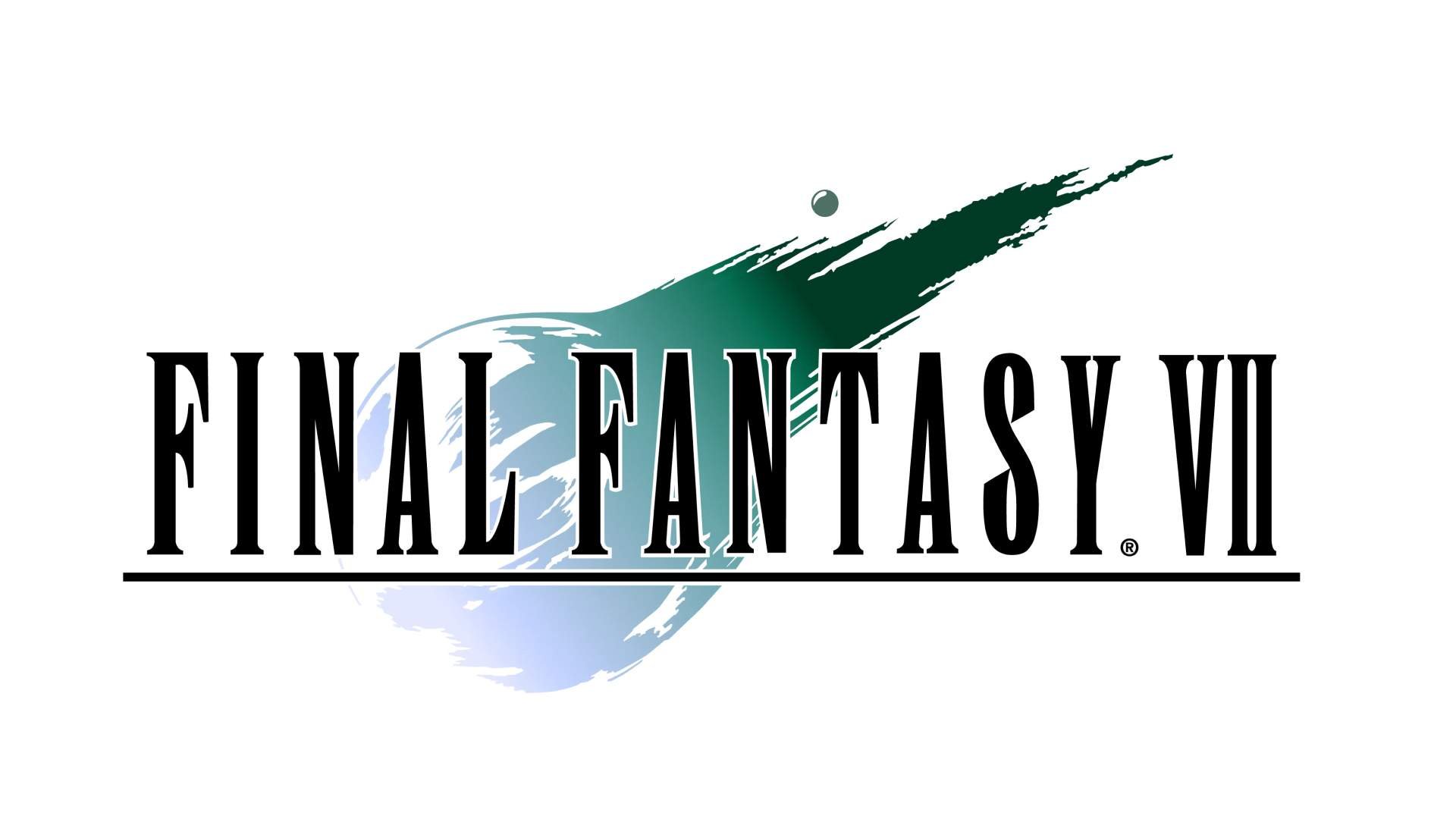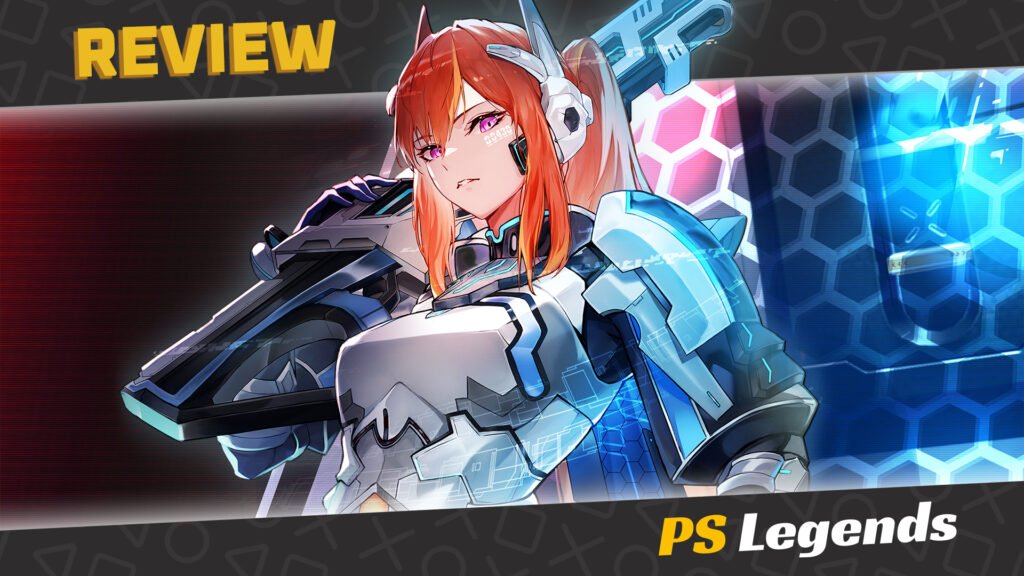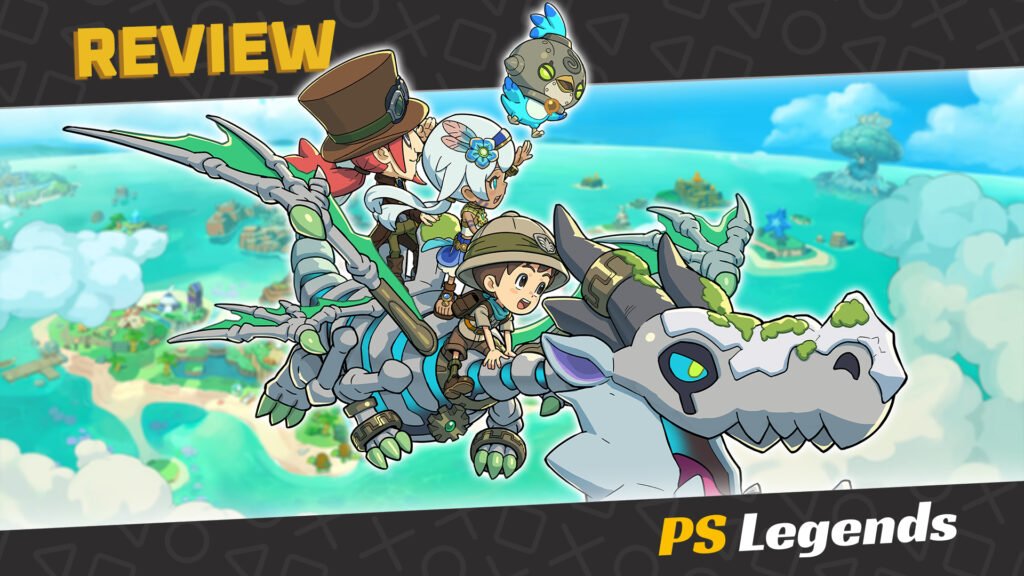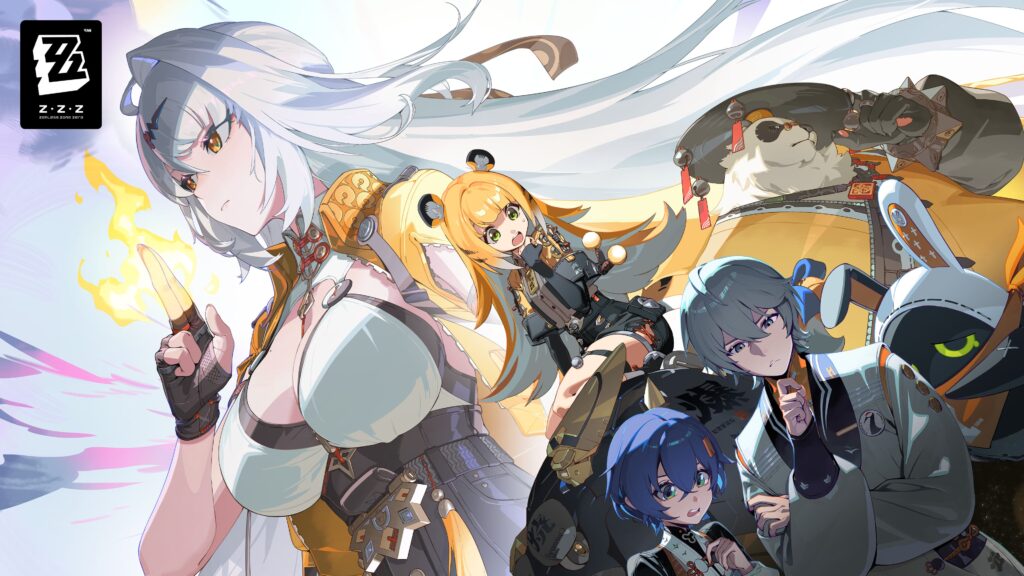Ah, the late ‘90s. What a bloody horrible time to be alive. Much like today, the world was gripped by fear and uncertainty. We had a dead princess and an impeached president, the return of terrorist attacks and school-shootings, a couple of feminist movements which broke communities apart and an irrational fear of the millennium bug. Still, at least we had Blockbuster Video, grunge music, and Harry Potter.
People needed escapism. In many ways, we still do. The emergence of 3D graphics in gaming revealed whole new worlds where people could lead a second life, maybe not a better life, but certainly a more exciting one. When you add real-world elements such as consumerism, monopolies, and classist social hierarchies into these fantasy worlds, it actually makes them all the more believable. Final Fantasy VII was about to set the world on fire, and that’s exactly what it did.
On This Page
Introduction
Now let’s jump to 2015. Final Fantasy VII is a multi-format mega-franchise, yet neither prequel Crisis Core nor sequel Dirge of Cerberus have managed to reignite that Final Fantasy VII flame. The same could be said for sequel movie Advent Children, the Play Arts figurine range, or the absolute tonne of unofficial written fan-fiction, including a hefty amount of well-drawn erotica, not that I’d ever read anything like that, never ever, not even once.
Nothing could recapture the magic of the original game, and so that’s what the fans petitioned developer Square-Enix for: A remake. After nearly a decade of asking, Square finally caved in. Final Fantasy VII Remake was in development, but there would be a couple of catches; Square wasn’t making a like-for-like remake but rather an episodic reimagining, and it would be another 5 years before we’d get to see it.
Many were excited by this new spin on the tale, while others were less than impressed with what was happening to the game that got them through some tough times. Square’s solution to this was a remastered version of Final Fantasy VII. This new edition cleverly serves multiple purposes. Firstly, it would buy them some time, keeping the fans happy for a while so they could get to work on the Remake.
The Remake would also be an expensive project, so porting a game to consoles that were already developed for Steam was a cheap and effective way to earn some much-needed cash. But, to the fans who disapproved of the new direction the series was taking, this remastered version of Final Fantasy VII was entirely an apology.
With every edition of the mighty Final Fantasy VII periodically releasing, I’m rewriting this review repeatedly to keep it relevant. It’s a review that exists to highlight the definitive version of the game, which certainly isn’t Final Fantasy VII Remake. Yet as I write this review for the umpteenth time, a generous fan-made re-skin of the original PC version of the game is causing waves on the internet with its beautifully realistic character models and voice acting. We need to see that on the console someday, somehow.
It was only a matter of time before I came back to Final Fantasy VII. I tend to play it again every five years or so, usually on whichever console runs the best version. From PC CD ROM to PS2 upscaled. I even played a cheeky Ouya version before the 2015 PS4 remaster. Whether it’s the apparent similarity to Light Fairytale or the fact that Final Fantasy VII Remake left me wanting much, much more (and not being what the fans asked for) I was ready to tackle the mighty Final Fantasy VII again.
As I write the reviews of Final Fantasy VII and Final Fantasy VII Remake simultaneously to differentiate the two while highlighting the pros and cons, I’m reminded of just how passionate the fans are. I respect that different people want different things from the series they grew up with. Still, as a reviewer, I’ll always recommend the game version that offers the most complete and comprehensive story and respects the player’s time and budget.
You aren’t getting a remake with this edition. You’re getting a classic with upscaling and tweaks. This is a port of the Steam release of the game, which includes the additional details added for the PC release, plus many more, which we’ll get into shortly. Unless Square-Enix decides to acquire the fan-made HD remodeling remaster mod with its added voice acting, this will likely be the most definitive version of the game you’re likely to see on console, for now.
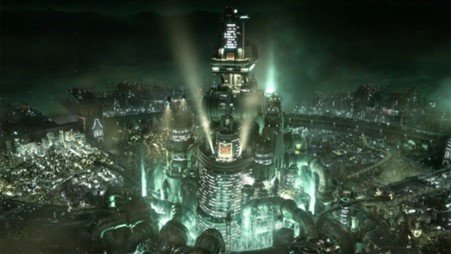
Story
As mentioned earlier, I’m juggling coverage for both Final Fantasy VII and its Remake simultaneously, and so much of the story’s first chapter is mirrored here, so apologize if I’m repeating myself. I’ll try to paraphrase a little. Back to the beginning again, fellow enthusiasts.
Poor Cloud. He’s really having a hard time. After joining the multinational electric company Shinra’s elite military unit, Soldier, to protect childhood sweetheart Tifa, it’s Tifa who bails him out when he leaves Shinra under mysterious circumstances and gives him his first job as a freelance mercenary.
Emasculated, broke, homeless, and suffering from headache-inducing memory lapses and voices in his head, Cloud is just one more bad day away from a full-blown PTSD mental breakdown. Fortunately, Cloud is pretty good at keeping himself busy and finds purpose with the anti-Shinra terrorist cell, Avalanche.
It turns out Shinra’s success stems from the fact that they are quite literally sucking the life out of the planet, so it’s up to Cloud, Tifa and Avalanche’s leader, Barret, to bring down Shinra, until they inevitably bite off more than they can chew and need to go on the run along with Aeris, a girl with mysterious magical abilities who has caught Shinra’s attention.
Cloud’s goal is to bring down Shinra whilst also keeping his friends out of danger. Fortunately, the world is also shaken by a well-timed distraction in the form of Cloud’s former Soldier mentor, Sephiroth, who appears to have shaken off his apparent death and is spending his time casually murdering people.
We can go a little beyond the small portion covered in the Remake without entering spoiler territory, as venturing outside the slums of the dystopian metropolis of Midgar brings access to a liberating world, where battling Shinra plays second fiddle to hunting down the mysterious Sephiroth, but in doing so, Cloud and Tifa will need to confront their past. What really happened in their hometown of Nibelheim five years ago?
It’s interesting to see a vendetta that’s both in the interest of saving the world while being personal at the same time, as each party member gradually reveals how Shinra has brought ruin to their lives, yet there are moments of happiness in this gloomy tale as Cloud finds himself stuck in an adorable love triangle with Tifa and Aeris.
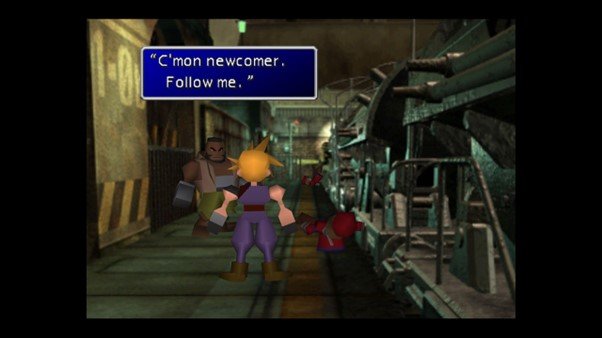
Gameplay
You’ll mostly be playing as Cloud throughout the adventure, though you’ll briefly take control of other key members of Avalanche during story events that see the party temporarily split up. Characters are mostly represented as adorable, blocky, chibi-style avatars that are surprisingly emotive and expressive for their time, switching to their more detailed, realistically proportioned counterparts in battle.
Like all of the Final Fantasy games before it, VII brings back random encounters, with the screen blurring and twisting into a battlefield where up to three characters can participate. Through the familiar Active Time Battle system, they can attack with their weapons of choice, use magic, use items, and more. The bulk of your battle commands will be dependent on your equipped ‘materia’, colored orbs that can be fitted into slots in character weapons.
Materia takes many forms: elemental magic spells, stat improvements, command moves, magic bonuses, and summons. Summon materia is similar to offensive magic, except you actually bring in an entity that does some form of colossal, elemental magic attack. All of your favorites will make their return, Shiva, Ifrit, Ramuh, Odin, and many, many more. The various forms of the dragon Bahamut are particularly deadly.
The support materia helps modify your magic materia. For example, if you want to have your ‘Fire’ spell target all of the on-screen enemies instead of just one, simply link it to an ‘All’ materia and blast away. Then there’s the command materia, which includes abilities such as Sense, which allows you to view an enemy’s stats. Lastly, you have your independent materia, which are usually basic stat boosts for the character equipping it.
Along with materia, you have your weapons, armour, and accessories. Besides the obvious boosts in strength, both weapons and armour have certain functions which can provide additional benefits, such as extra materia slots or allowing long-range attacks. Accessories are particularly useful and well worth switching to counter your enemy’s strengths. Some may make you resistant to bad status effects, some may raise individual stats, etc. There’s a significant advantage to planning a strategic loadout against certain bosses.
By far, the most satisfying addition to combat is the Limit Break system. Each character gets a few of these, and when they take enough damage, they’ll be able to retaliate with a massively destructive special attack which is very pleasing to see. Even today, Final Fantasy VII’s gameplay is some of the deepest you’ll come across. Whether it’s fighting, hanging around in towns, or raising chocobos, you’re bound to get engrossed in this interactive world.
Besides all that fun, you’ve got the side-quests. There’s the Gold Saucer, a glowing amusement park, with rides, mini-games, and interesting people to meet (including an unusual feline ally). Games there include basketball, the Battle Square, and snowboarding. It’s a really fun idea that’s great to play around in if you want to take a break from the story.
Then there’s the chocobos. Final Fantasy VII is the beginning of the franchise’s chocobo side-quests. In this one, you’ll find, catch, breed, ride, and race them. Of course, this is optional, which is good news since it takes a bit of time and patience. Still, if you give it that time, you will no doubt be satisfied with the results, including the most powerful materia in the game.
But what’s new? Well, you’ve also got the addition of the cheats featured in the Steam release which can speed up your playtime with drastically increased movement speed and infinite Limit Breaks, enabling your active party of three to unleash their most powerful available special attacks without the need to recharge them. You can also switch off random battles whenever you like if you want a breather.
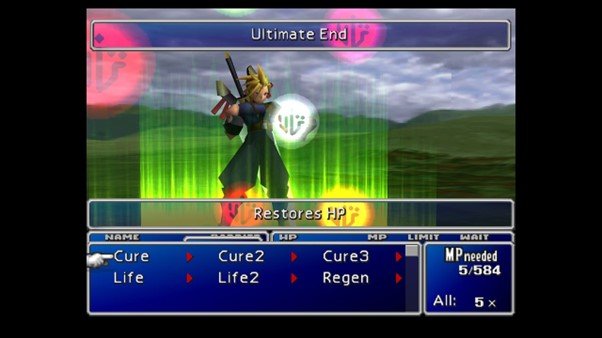
Graphics/Sound
The graphical improvements to this edition of Final Fantasy VII are small yet plentiful, almost like an upscaling filter has been applied to the entire game. Starting with the initial PC release of the game with its added extras (characters have mouths – hooray!) and a few additional graphical details, removing those moments of janky clipping and applying smoother textures throughout.
Character models still alternate between their blocky, chibi-style representations outside of battle, before switching to their well-animated counterparts in battle. The frame-rate has received a small boost which helps battle animations flow more smoothly and make strikes that bit more impactful.
The pixelated edges of character models have been completely smoothed out while a layer of grain has been lifted from the environments to provide a touch more colour and clarity, yet just enough grain is left behind to retain the gritty, lived-in feeling of those iconic locations.
That same nostalgic soundtrack is present which still tugs on your heartstrings to this day. It remains unchanged, yet the fully orchestrated version of the iconic ‘One Winged Angel’ has been used, while the earliest version of the game used a flatter midi-version.
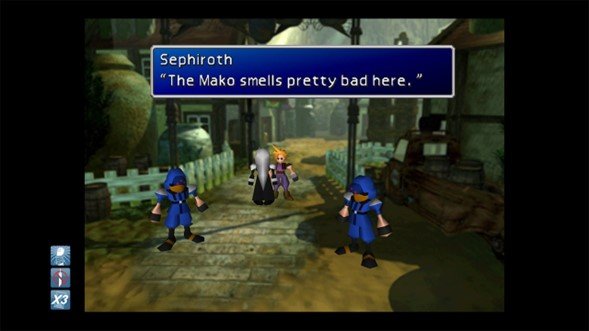
Replayability and the Platinum Journey
Permit me to share my platinum journey with you. Being a PS4 release, the game includes a mixed assortment of trophies. As you might expect, the trophies are mostly linked to 100% completion of the game, something that’s largely a joy to accomplish but gets a tad grindy when you need to level a character up to level 99 and earn 99,999,999 Gil (money) which you can get by selling mastered materia.
I finished the game with a near-perfect save file (something that most fans aspired to back in the game’s prime) in 2015 but wasn’t so keen on those grindier trophies and so I’d been sitting on a respectable 91% completion, for a while. Interest renewed, I reloaded my last save-file and went EXP and AP farming. Two evenings later I had my trophies… except one.
There was still one loose end. I needed to have a date with Barret. Aeris was my first choice though, and the girl I got in my first playthrough. Sorry Tifa but no one likes being allocated to the friend-zone for years. Heck, if anyone needs to get laid it’s the angsty ninja Yuffie. Why the hell would I want a date with the angry loudmouth Barret?
Against my better judgement, I started a new game; a speedrun to get to the date sequence. I shunned Tifa and Aeris and kept Barret in my party at all times. Finally, after nearly ten hours I got my date… with Aeris again. I guess this was meant to be. Sorry Barret, Aeris is still my girl even when I push her away.
It was a sign that I was never meant to get that platinum. I’m okay with it, at least that was what I told myself. A complete lie of course. I want my platinum. I’ve earned it. I just don’t want that Bad Bromance trophy for the Barret date. There’s a very good reason for this, as it requires you to painstakingly follow a dialogue choice guide and be a complete ass to Tifa and Aeris.
As someone who grew up with Final Fantasy characters, they have a special place in my heart. I’m not really cool with treating them like dirt. Heck, I was very much in love with one of the girls from Final Fantasy VIII. Perhaps I’m being over-sentimental. I’m proud of my platinum to show off my mastery of such a beautiful, historic game, but I’m not proud of what I did to get it. Now, if you’ll excuse me, I have a save file to delete.
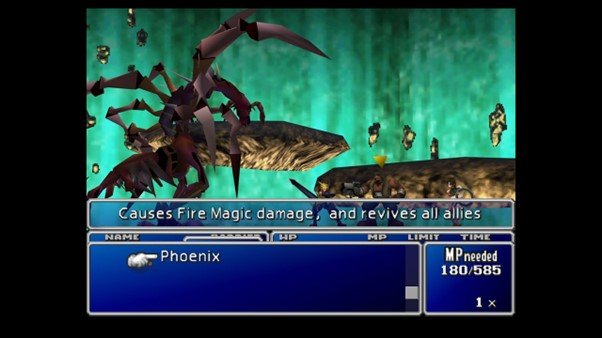
Conclusion
Removing the muddy qualities of old games brings with it the illusion that you’re playing a game that’s newer than it is, and that’s a good thing. It works because you’re polishing up a game that got everything right the first time around and simply needs a little push to help the player overcome the higher standards that come with time.
When you get key components like story, world-building, and character depth spot-on, it doesn’t take much polish to revive a superb game, and that’s why remastering Final Fantasy VII, along with its successors, works far better than remastering its weaker-written predecessors.
The 2015 edition of Final Fantasy VII was a real eye-opener for me. It taught me something that really should be so obvious: for the best version of our favourite games, we shouldn’t look to the future with our fingers crossed, but to the past with a smile on our faces.
This version is made for the fans, and it shows. The upgraded visuals don’t make the game look new, but rather just polished enough to not look out of place on current hardware, while the trophies set little challenges for the player, guiding them towards the more secretive parts of the game which they may have missed the first time around.
We also have a sort of acknowledgment that some items in the game are missable, and so the trophies aren’t too focused on hunting them down, but rather playing around with lesser-used mechanics like breeding chocobos and level grinding, and this is where those generous cheats kick in, cutting that grind time and drastically speeding up your playthroughs if you do mess up and choose to restart.
This is a superb package, and being based on the international version of the game brings with it the translation fixes present in that version of the base game, including the default spelling of ‘Aeris’ from the worldwide releases, though you do have the option to change it if you prefer the North American variant, or something else entirely if you want. It’s a long-missed fix absent from newer games in the series.
Final Fantasy VII 2015 is a fantastic remaster. It may seem minimalist at first glance, but when you see side-by-side graphics comparisons and play around with the cheats, it raises the fun-factor to a whole new level, and that’s why this epic little piece of history belongs on everyone’s console.
Joys
- A nice layer of visual polish
- Fun cheats and quirky trophies
- It’s Final Fantasy VII!
Cons
- It’s not a remake?

